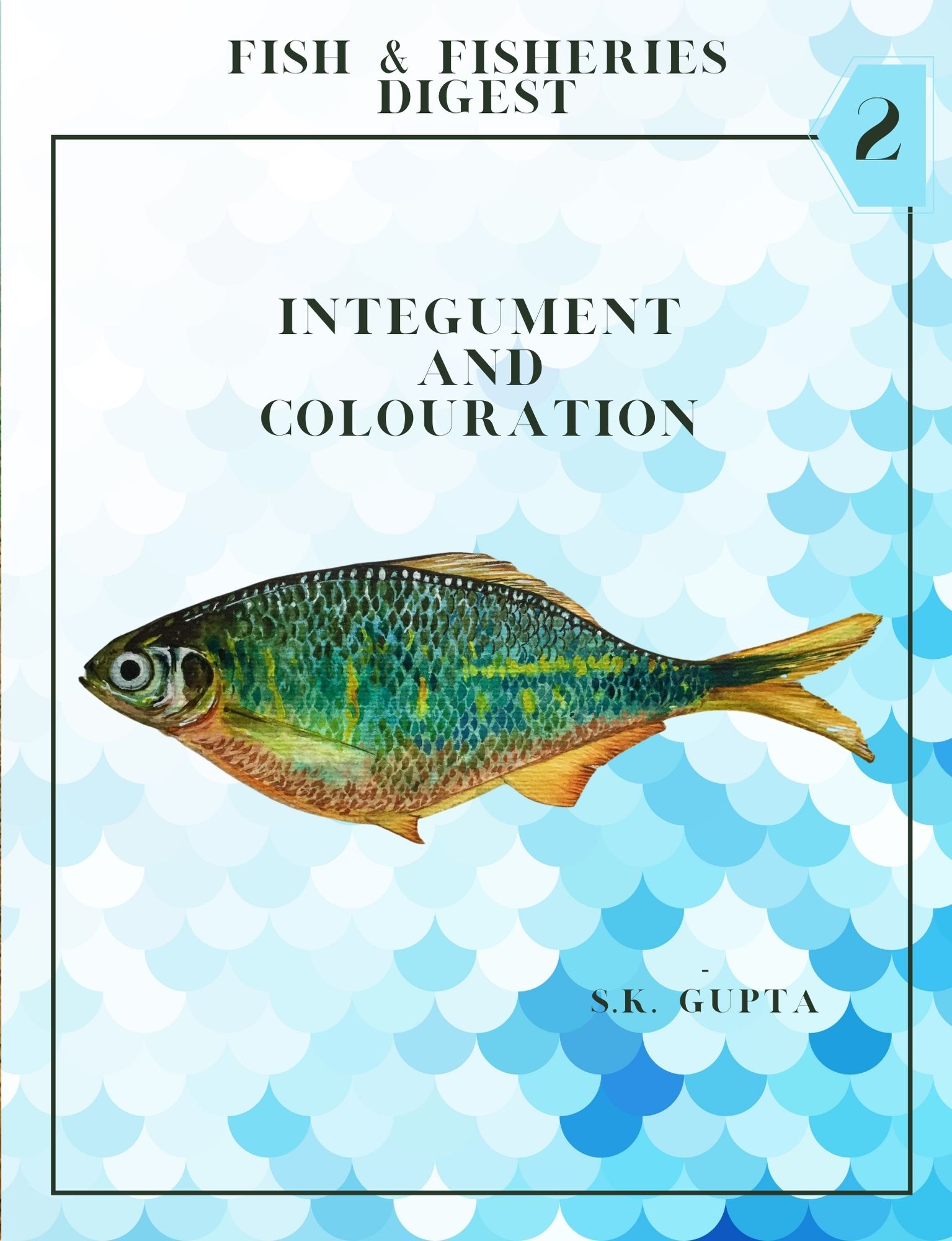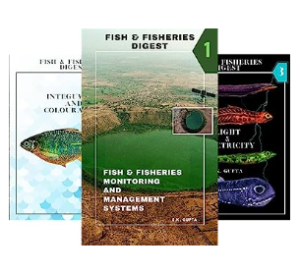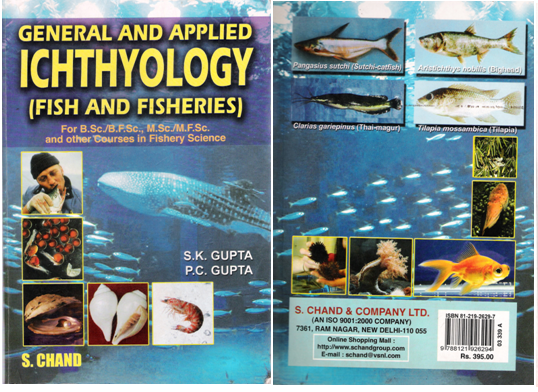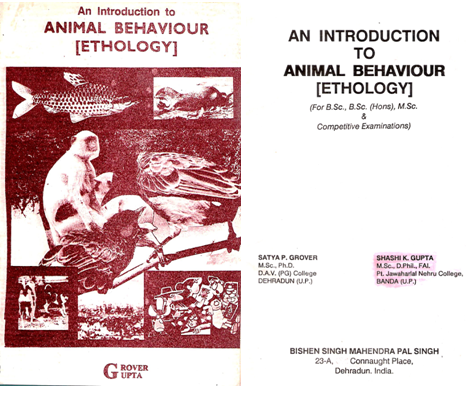Fish & Fisheries Digest – Part 5
The global Code of Conduct for Responsible Fisheries (CCRF) makes it mandatory to establish principles and standards applicable to the conservation, management and development of fisheries. ‘Article – 9’ is related with ‘Aquaculture development’ and 9.3 broadly outlines:
“Use of aquatic genetic resources for the purposes of aquaculture including culture-based fisheries”.
Subsection 9.3.5 emphasizes:
“States should, where appropriate, promote research and, when feasible, the development of culture techniques for endangered species to protect, rehabilitate and enhance their stocks, taking into account the critical need to conserve genetic diversity of endangered species”.
‘Genetics’, with reference to fishes, is no different from other animals and follows typical Mendelian principles of inheritance. This PART – 5 of the SERIES, ‘FISHERY GENETICS & BIOTECHNOLOGY (Episode – 1)’ includes the contents related with the TOPICS viz., The Physical Basis of Heredity [Chromosomes], The chromosome manipulations or chromosomal engineering (Polyploidy, Effects of Triploidy/Tetraploidy, Gyno – and Androgens), Sex Determination, Sex reversal, Sex control etc.
To maintain continuity with the contents of PART – 2 and 3, PART – 4 unveils another facet of ‘skin’ by discussing a vast array of fishes/shellfishes, becoming infamous by being ‘POISONOUS’ or ‘VENOMOUS’. Under certain conditions, a good number of food fishes/shellfishes become ‘POISONOUS’ and prove hazardous on eating, thus causing serious health problems world over. Noxious chemicals synthesized by specialized cells of the skin of some cartilaginous and bony fishes and the ‘VENOM’ produced by glands associated with spines on the fins or opercula not only provide protection to the fish from the predators but also empower them to subdue the enemy/predator.
It will also be worth venturing into the diverse MOLLUSCS/CRUSTACEANS, aptly discussed for their VENOMOSITY impacted via ‘skin’ or other internal organs.
Sometimes, the SEAFOOD (fish/shellfish) is mistaken as harmful by the body’s immune system and this is reflected in the form of ‘allergic reactions’. The CHAPTER-5 of this episode is, thus, devoted to ‘Seafood Allergy’, after giving proper treatment to ‘POISONOUS AND VENOMOUS FISHES AND SHELLFISHES’ in CHAPTERS 1 to 4.

This enterprise is designed to serve ‘Ichthyology-practicing’ students and the like, whether pursuing syllabus-oriented or competitive exam-oriented courses in India or other South-Asian countries.
To maintain continuity with the contents of PART – 2, the light-emitting photophores and electric organs are elaborated in CHAPTER – 1 and CHAPTER – 3, respectively, of this ‘PART – 3’ of the SERIES. ‘Biofluorescence’ is another curious phenomenon related with ‘light’ production (but differently from Bioluminescence) with the involvement of ‘skin’ and its components. The contents of CHAPTER – 2 will not only reveal the interesting aspect of ‘Biofluorescence’ in fishes but will also signify the role of skin and its components in causing fishes to fluoresce.

Fish & Fisheries Digest – Part 2
‘The skin together with its derivatives [Glands, Hair, Nails, Hoofs, Horns, Scales, Spines, receptors etc.] is referred to as the integument’. The integument or cutis [Latin cutis = living skin; >cutaneous = pertaining to skin] or simply skin [Middle English skyn, skinn from Old Norse skinn = animal hide, fur] is the outermost covering of the body. Skin is often not only described as the ‘largest organ’ of the body but it is the first organ that is visible or touched when any animal is handled while practicing identification of the type of organism. Although simple to appear, the skin / integument is yet a complex organ, performing many functions for the body viz., protection (by generating exoskeleton and secreting slime or mucus), providing various patterns of colouration, locomotion, food storage, respiration, excretion, sensation (irritability), sexual recognition, etc. In highly specialized fishes, the electric organs, venomous glands, light emitting photophores etc. are also the products of skin. Hence it has been aptly being called as the ‘jack of all trades’ (but ‘master of none’) because all the functions are performed with the aid of other systems of body. Simply to derive that it is alone not so vital that it may threaten the vitality of an animal. The Integument and its derivatives (Hard and Soft) are discussed from Agnatha to Gnathostomata in Chapters 1 to 4. Chapter 5 deals with the significance of the Scales whereas Chapter 6 elaborates the role of Mucus in Fishes. Providing various patterns of colouration is one of the important tasks of the integument and ‘Fishes’ are often appreciated for their beautiful colourations, colour markings, spots etc.; particularly when a person is considering the entertainment value of aquarium fishes. For an Ichthyologist, the characteristic colouration of a fish becomes an important taxonomic character and for an Evolutionary Biologist it becomes a character of adaptive value (may be for concealment, advertisement, disguise/mimicry etc.). Bony fishes show the most brilliant and varied colourations as compared to cartilaginous fishes. The colour-related various aspects like structural colouration, biochromes, chromatophores, physiological and morphological colour-changes, structural and biochemical factors involved in colour change, Biochemical events and pigment motility in different chromatophores, extrinsic and intrinsic factors for colour changes, functional aspects of colouration etc. are discussed in Chapter 7.
2021 (1st January): ‘Fish and Fisheries Monitoring and Management Systems’ forms the contents of ‘Part – 1’
Fish and Fisheries being a vast discipline includes a number of topics prescribed variously in the curriculum of Universities and institutes. To render the subject matter more interesting, absorbing and less voluminous, an idea was build-up to unveil the ‘Text’ in the form of a concise, topic-oriented ‘SERIES’ of ‘Fish & Fisheries Digest’. ‘Fish and Fisheries Monitoring and Management Systems’ forms the contents of ‘Part – 1’ of the SERIES, at the hands of the readers. Furthermore, some Appendices (with information relevant to the topic or otherwise) may also find place at the end of the said eBook ‘SERIES’. For the benefit of the ‘Competition-oriented’ (NET/JRF) students, a ‘Question Bank’ is placed at the end of each Topic of the SERIES.
2006: General and Applied Ichthyology (Fish and Fisheries), Published by S. Chand and Co., Delhi [for B.Sc. , M.Sc. and Competitive Examinations ] (reprinted 2008, 2010, 2013 & 2014). *Volume II of the same is underprint. General and Applied Ichthyology (Fish and Fisheries)
Designed to be published in due course of time or made available to the concerned through appropriate channel
1992: An Introduction to Animal Behaviour (ETHOLOGY), Published by M/S Bishen Singh Mahendra Pal Singh, Dehradun (Uttarakhand)





